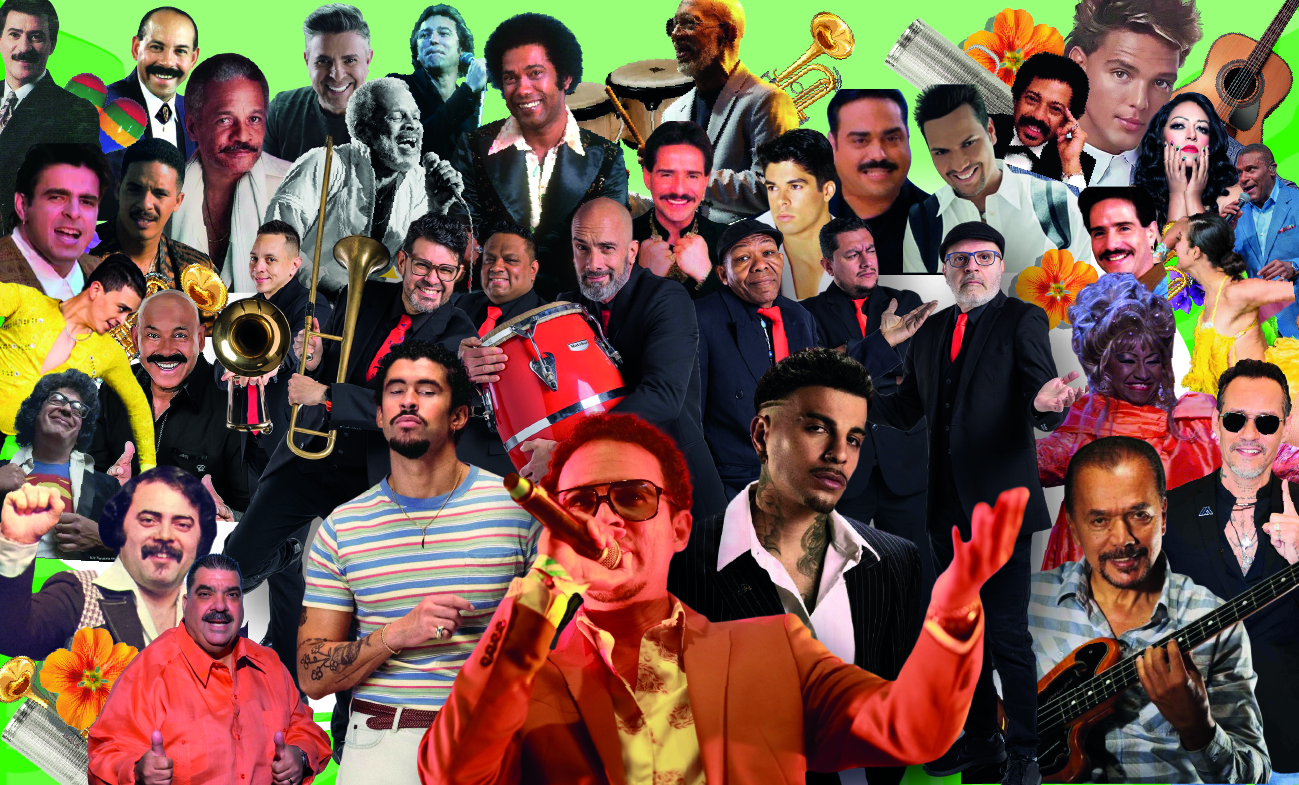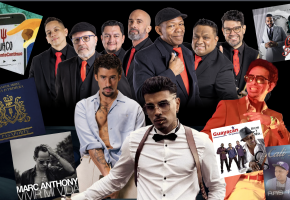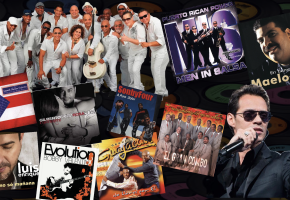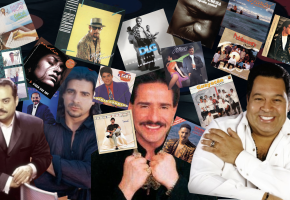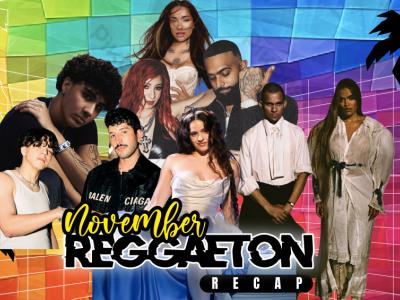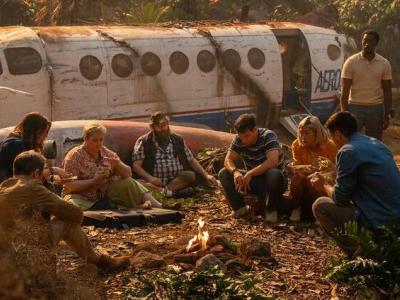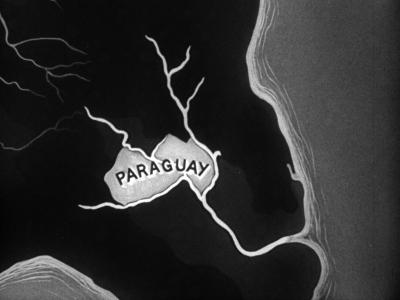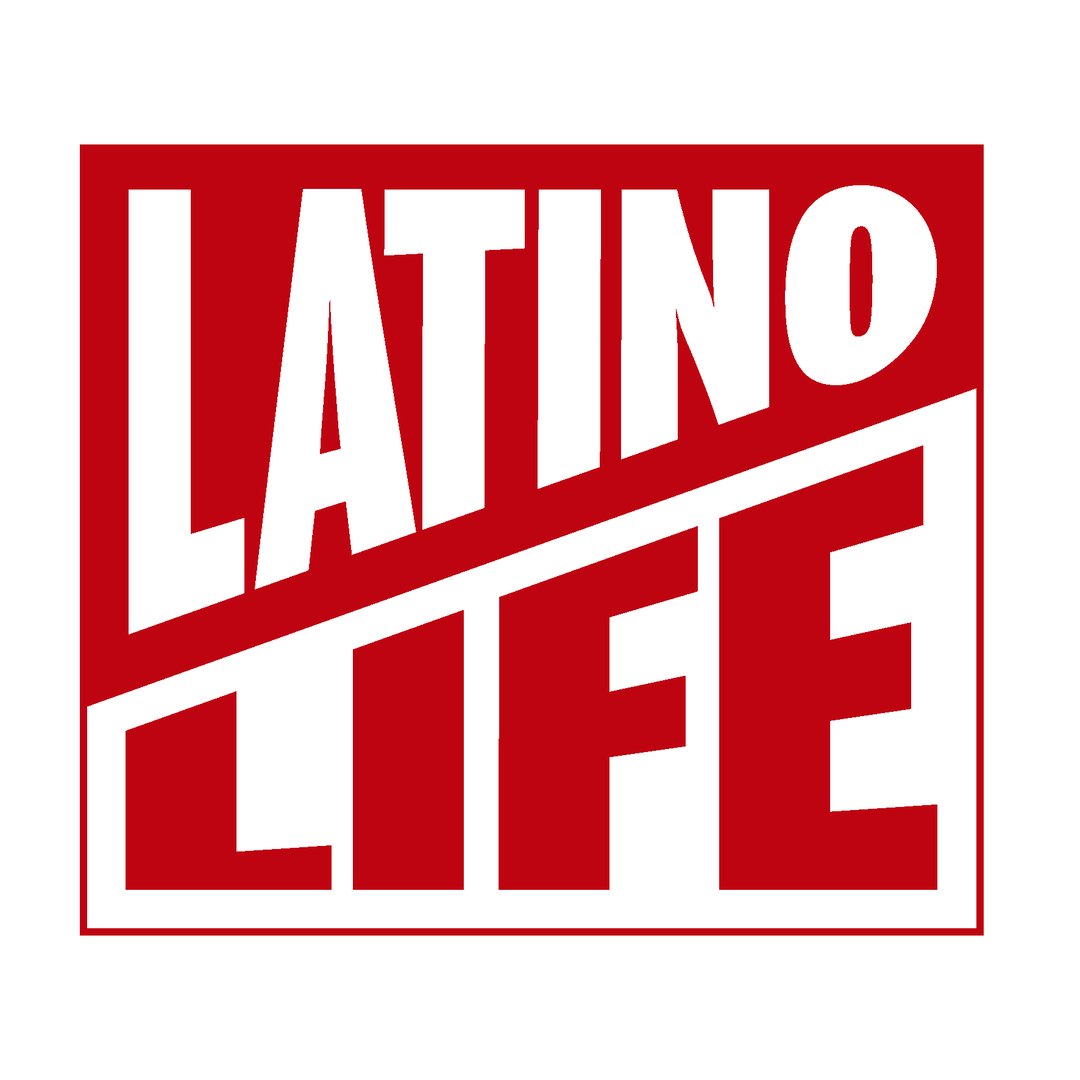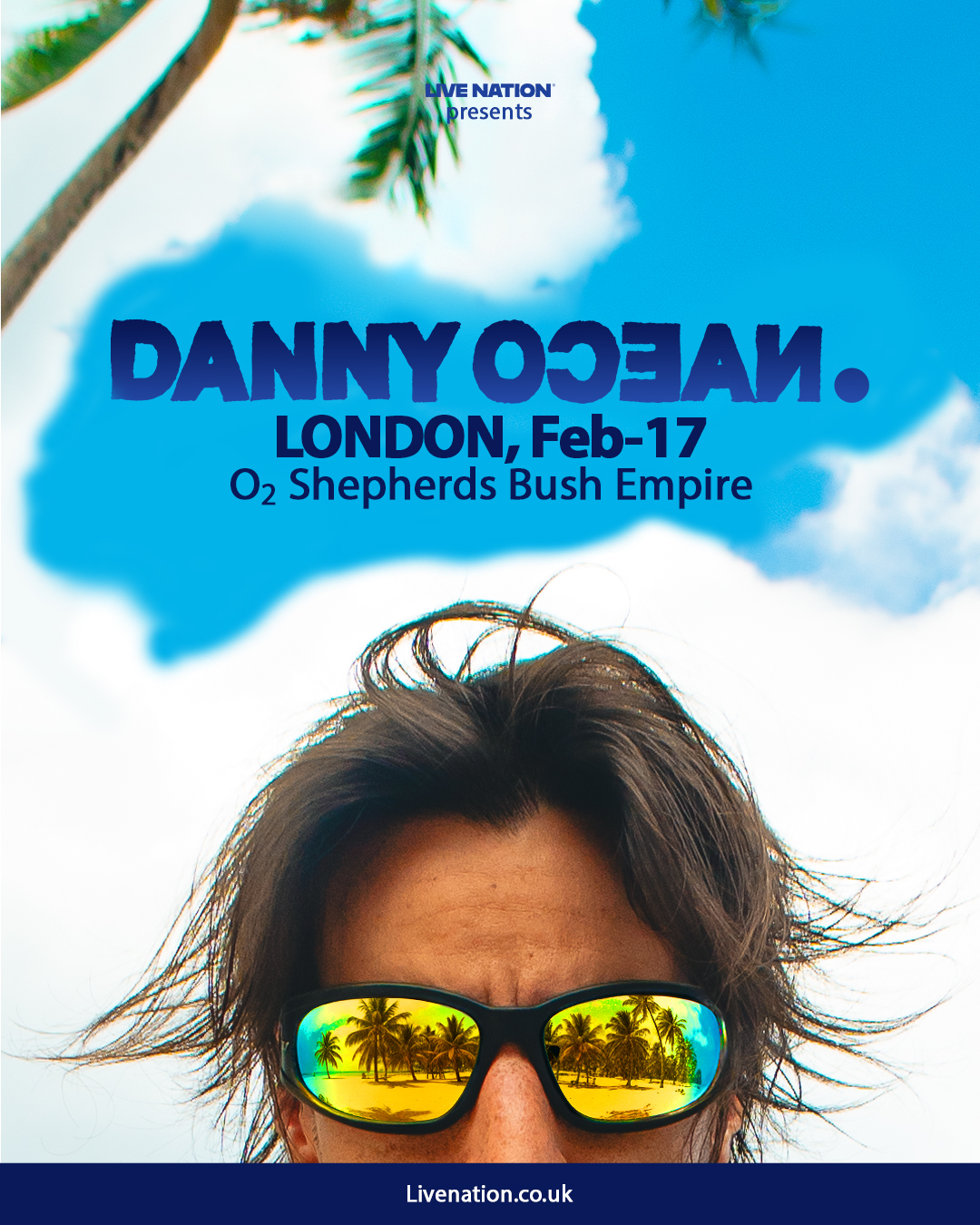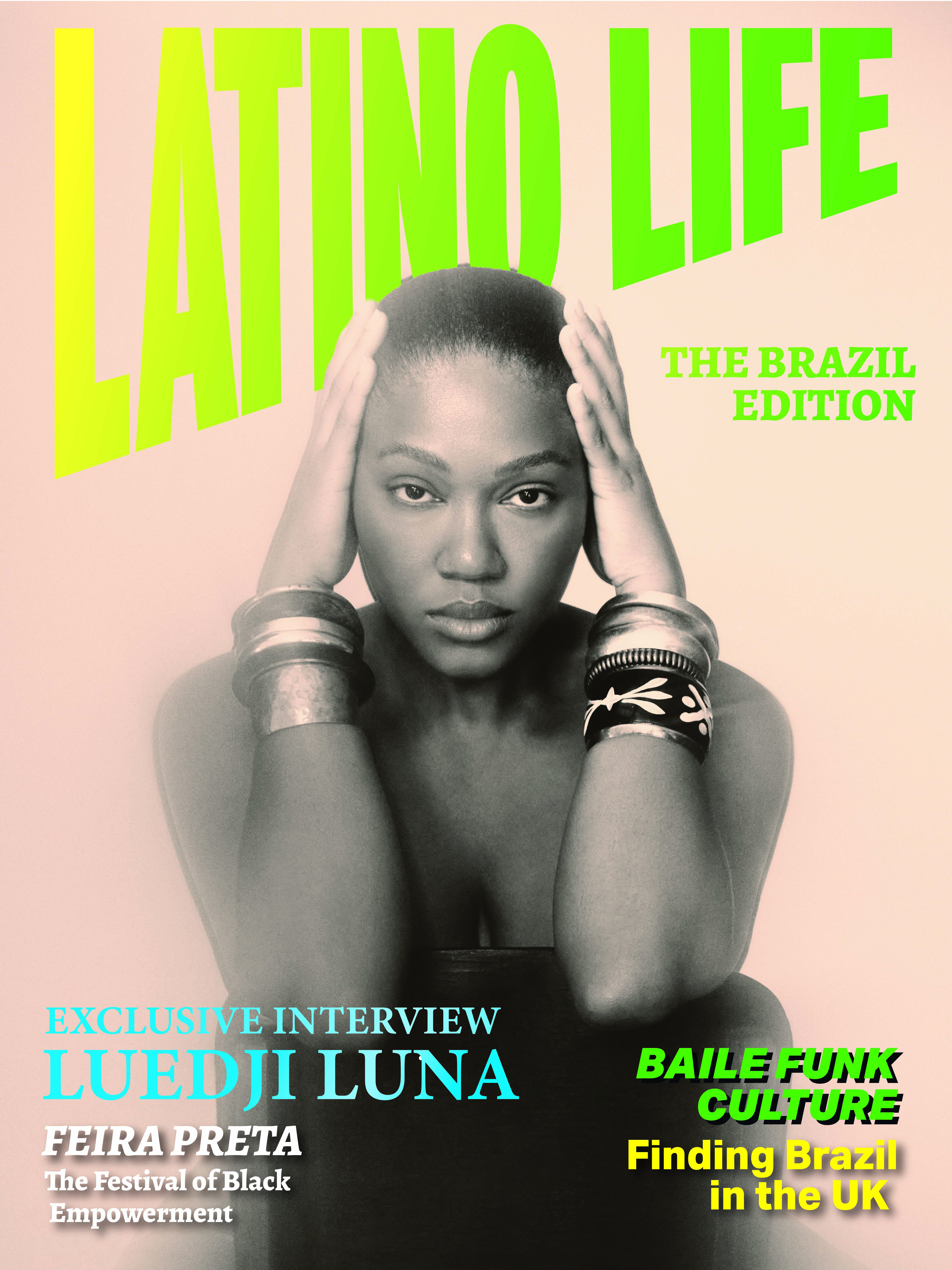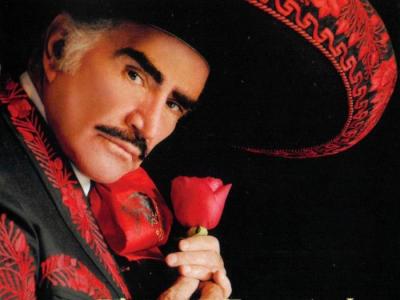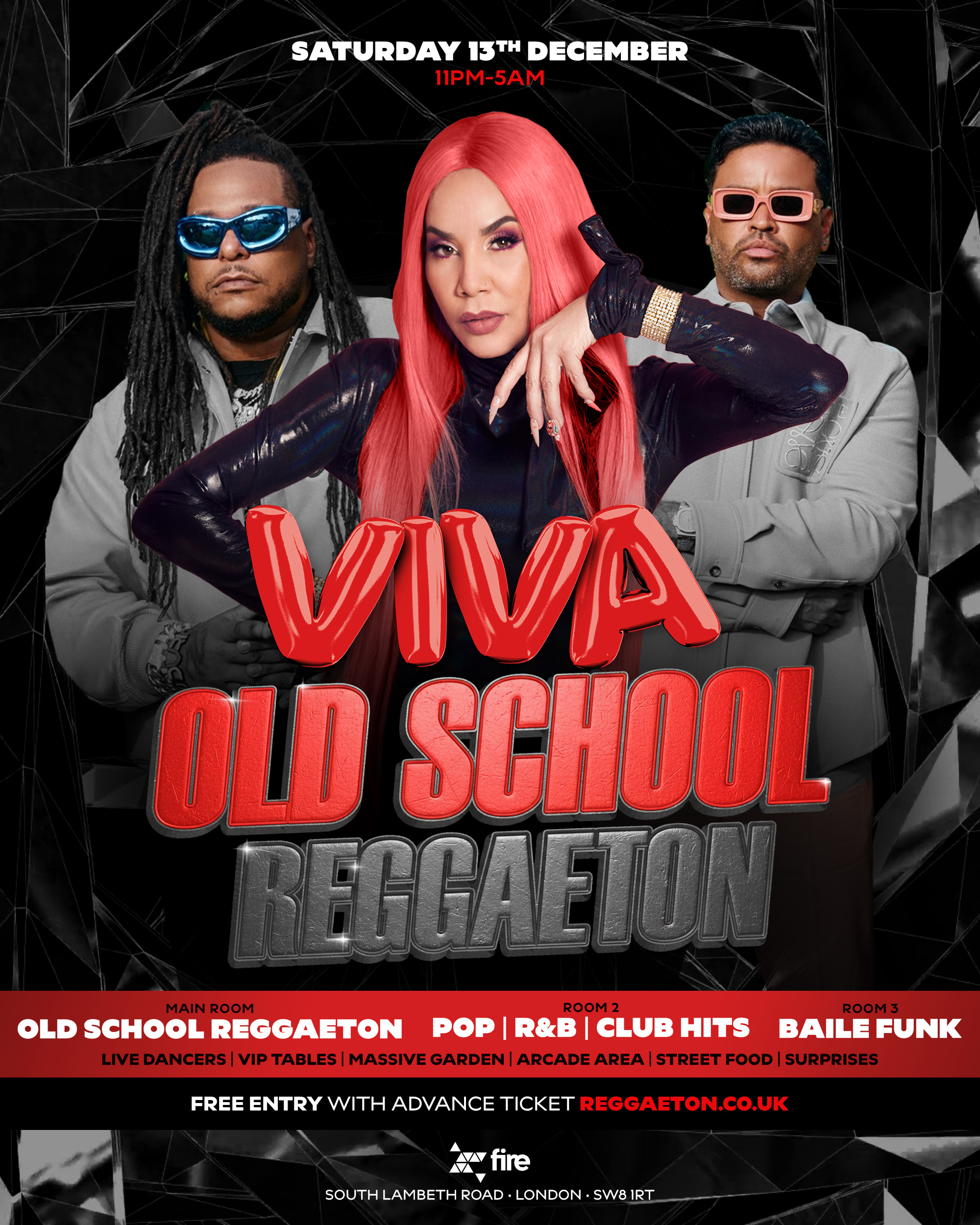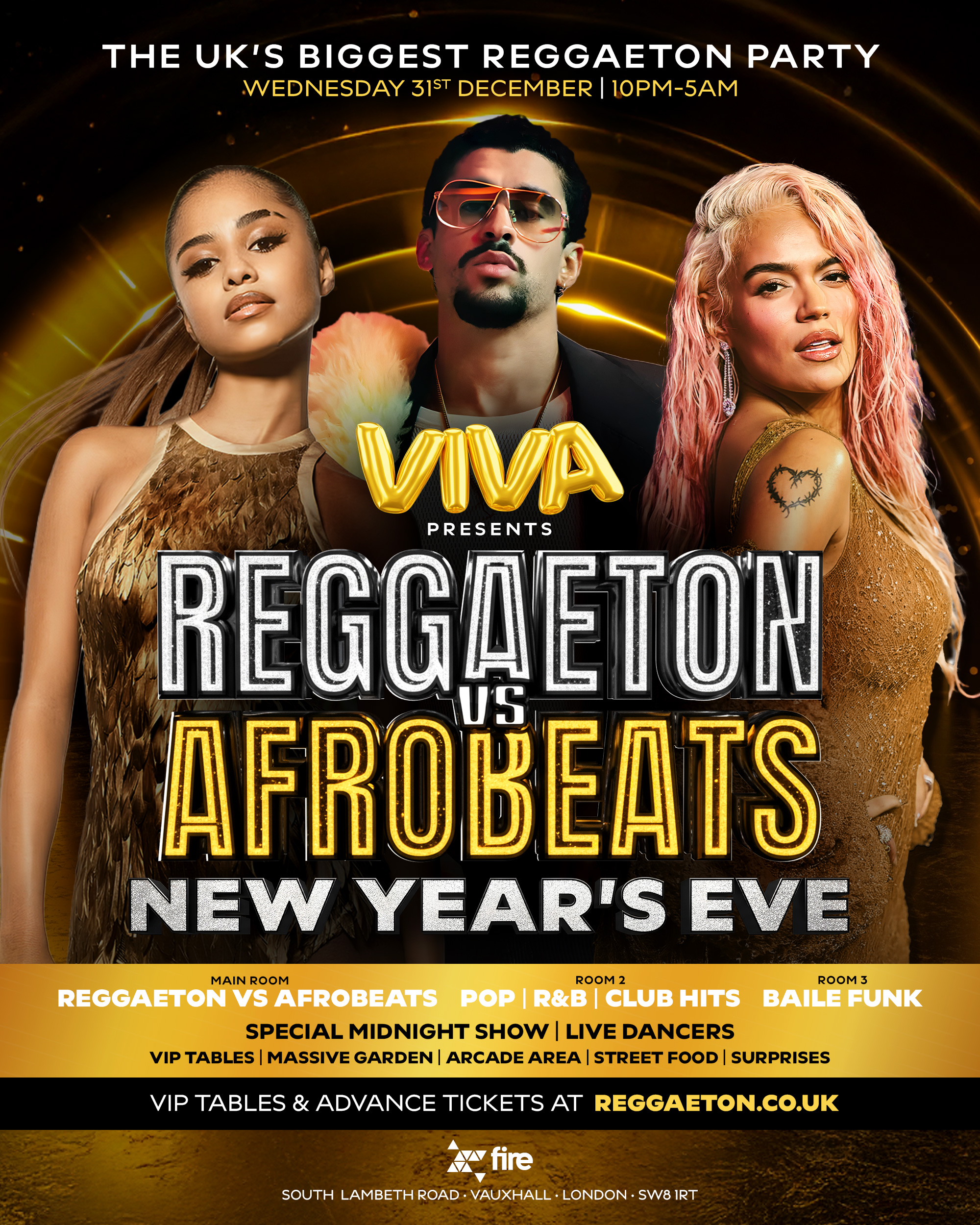At the end of 2024, Rauw Alejandro, the coolest dude in reggaetón, included a version of Frankie Ruiz's 1985 hit Tú Con El in his album Cosa Nuestra - a bold move considering that the late Nuyorican artist was one of the finest salsa singers that ever lived and a national treasure in Alejandro's native Puerto Rico. The production was almost identical to the original, with Rauw's smooth tone eerily resembling the great New Jersey-born Puerto Rican vocalist.
Because of salsa's intricate rhythms and syncopation, with many instruments playing different patterns and beats falling in the expected places, few reggaeton artists had up till then attempted the genre. Would Rauw Alejandro really be able to sing the song live? The question was answered with a performance in New York City, the Puerto Rican’s authentic street swagga, smooth delivery and charisma forgiving his vocal imperfections and his limited soneo. Slick rather than raw? Yes, but cute and captivating. Salsa's veritable Bruno Mars.
Then in January 2025 we get something even better. Bad Bunny releases Baile Inolvidable (Unforgettable Dance), written by himself. Not only was it courageous for the world's most successful reggaetón artist to release an original track, Bad Bunny goes a step further and tackles head on what is the most uncool perception of salsa among his non-Latino audience - the salsa class.
In his music video, an old man enters a community centre enquiring about salsa lessons, before flashing back to a young Bad Bunny, not the global style icon we know, but a shy and clumsy version, trying to follow the steps in the class. Who hasn't, if just once, been that guy or girl in a salsa class, feeling self-conscious and distinctly uncoordinated, mumbling 1-2-3 step 4-5-6? Every community, in every country in the world, from Telford to Tokyo, has a salsa class, and the exact same scene that could have taken place 1975 or in 2025.
On the one hand, the commercially savvy artist taps into one of salsa's most universal and timeless experience. Yet, there is a bravery in using the tacky perception of salsa, to reveal a genre that is, at its very core, as cool as afrobeats, soul, jazz, funk, hiphop or any other urban music. Only Bad Bunny could have done this. What other circumstance would have BBC Radio 1's Nick Grimshaw fawning over a video of a salsa class?
In the real world, if Bad Bunny hadn't made this song, it would have been ignored by British radio DJs and media, not even important enough to mock. Because, let's be honest, if you forced an English person into a thought about salsa, it would consist of not-very-cool short chubby men sporting pleated trousers, silky shirts and medallions. And yet, Bad Bunny knows that in the real world, away from the white-owned music media and its hipster universe, salsa and salsa artists were always and are still cool, because they authentically express Afro-Latin street culture, whether in San Juan, Puerto Rico or the slums of Nueva York.
For Latin Americans, those salseros in pleated trousers are as cool as Fela Kuti. Rauw Alejandro's whole album, Cosa Nuestra (Our Thing) and the trilby-wearing vintage gangsta-look he created, is a homage to Willie Colón and Hector Lavoe’s seminal 1969 salsa album of the same name. Not only is salsa cool, even reggaetoneros recognise that, from a musical point of view, it is a richer, better, more sophisticated level of music. "When I listen to Inolvidable I think: this is the best song I've done in my life," Bad Bunny recently told Rolling Stone Magazine.
It's no wonder the new salsa releases have resonated with audiences. Rauw Alejandro’s New York salsa-inspired Cosa Nuestra not only became his highest charting album, it would end up having the highest-streaming first week for any Latin album in 2024. And Bad Bunny's album Debí Tirar Más FoTos, a love letter to traditional Puerto Rican music, reached number 1 on the Billboard chart and broke Spotify’s record for reaching 1 billion streams, in only 13 days.
But, let's be clear, Bad Bunny and Rauw Alejandro did not bring balsa back, because salsa never went away.
The Music of the Streets
The beaches of Lima may not have the glamour of Rio or the swagger of Havana; they are grey, gritty and rough. But on Sundays in the summer, families and friends descend onto playa Los Yuyos or Aguas Dulces for a much-needed respite from a relentlessly chaotic Latin American capital. What struck me this January, as I sat on the beach soaking up the sounds of stereos competing for airwave dominance, was the absence of current urban pop hits. Most of the music being played were old salsa hits from the 70s, 80s and 90s: Frankie Ruiz, Wille Colon, Cheo Feliciano, El Gran Combo, Tito Nieves, Joe Arroyo and Luis Enrique to name a few. Whilst urban artists may be filling stadiums and dominating commercial radio, on the streets, at kioskos (corner shops) and bodegas, out of cars and here on the beach, salsa is alive and kicking.
"All over Latin America, salsa is the music that is still played on the streets, it's the music that brings families and friends together," says Jose Luis, the UK’s leading Latin DJ. "Just like 70s and 80s RnB is for today's urban music, salsa's rhythms are a joyous common denominator at the roots of contemporary Latin music. It’s the music that made us. Most importantly, it's the music that still gets us dancing."
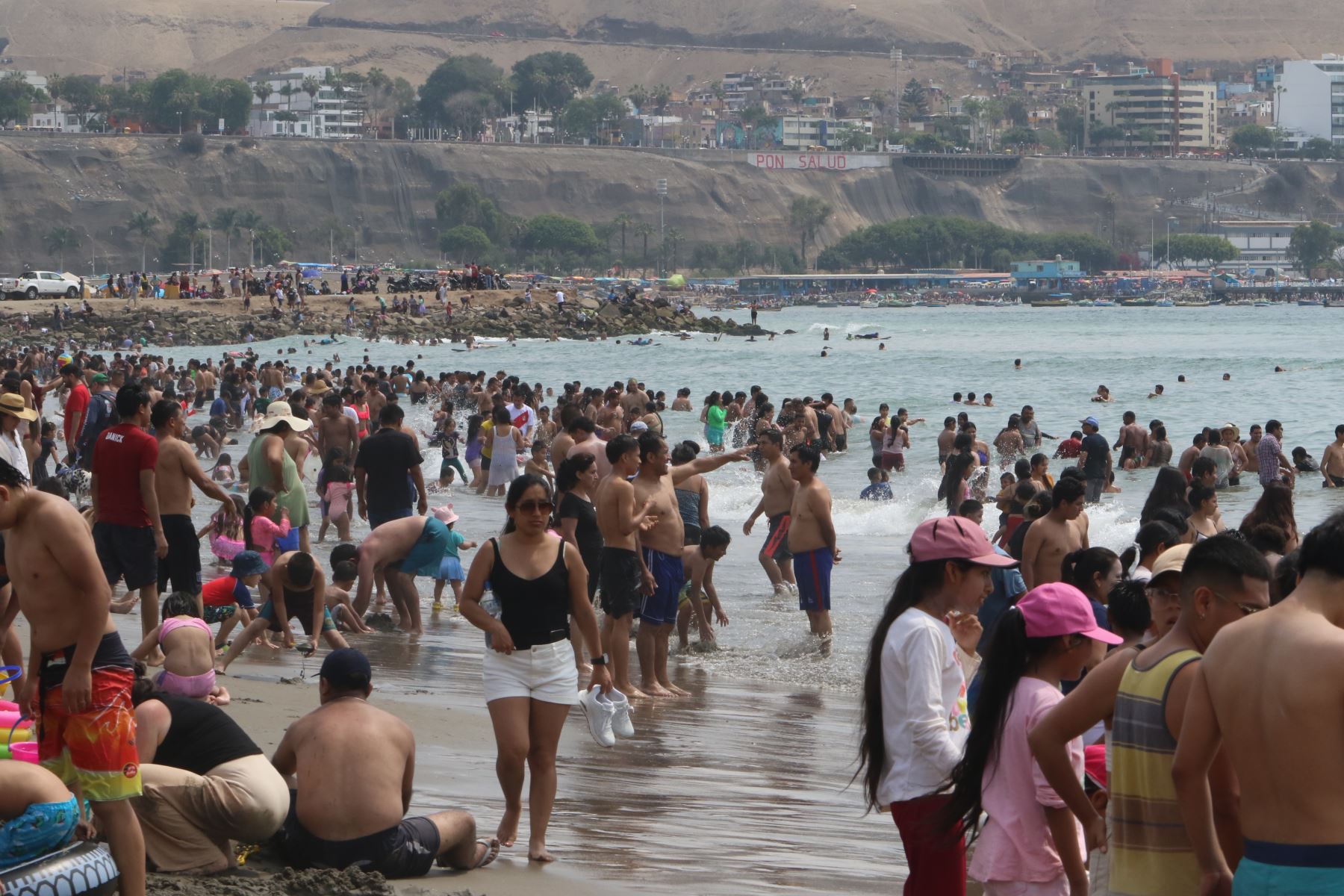
Despite Bad Bunny claiming that "now people are going to salsa classes, I think the whole world wants to dance salsa,” the reception to his song was not a product of any kind of 'salsa revival' he kicked off. Just as his album, with its nod to traditional Puerto Rican genres, was one that he was waiting to record, it was also one that his Latin American fanbase was waiting to receive.
On the other side of the continent from Lima, in Argentina, where Puerto Rican reggaetón has inspired a generation of Argentine urban artists, more people are also listening to salsa than ever before. When I lived in Buenos Aires in the 1990s, relatively few people listened to salsa; you would only hear rock, pop, bad techno and copycat cumbia in the Argentine capital. In 2025, after three decades of immigration from Colombia, Bolivia, Peru and, most recently, Venezuela, one out of two taxi drivers will be playing salsa. On the streets of Buenos Aires, cars pass frequently blurting out Frankie Ruiz or Oscar D’Leon. "Buenos Aires is more Latino than it's ever been," Daniel, a local Argentine barista admits. "The Venezuelan's have brought us their sabor (flavour)."
Ironically, it was one of the most internationally successful of Argentina's new wave of urban artists, Nathy Peluso, who first recorded a straight salsa track, Puro Veneno back in 2021. Despite being criticised by salsa purists, she has continued to record salsa tracks such as La Presa and, only a few weeks ago, Erotika, a tribute to the salsa erotica of the 90s that she grew up with, and her most successful salsa release yet. Defending herself on Tiktok, she said: "I’ve been a salsa addict since I was born. Everyone who knows me knows that, for me, salsa is home. Eddie Santiago, Grupo Niche, La Gloria, Ray Barreto, Celia for fucking ever!!!"
Salsa as the Foundation of Reggaeton
"Not to take anything away from Nathy's passion for the genre, or her decent efforts, the salsa produced by Puerto Ricans or Cubans has a groove that is difficult for any musician who has not grown up in the Latin Caribbean or immersed in Afro-Latin culture, to replicate," continues DJ Jose Luis. This groove, this tumbao - a product of the subtly imbued timing, rhythm, cadence or, as the Puerto Ricans say, maña, a skill deeply rooted in African culture - combines to sooth the soul, tug the heartstrings, lift the spirit and make the listener move. And this groove is present in Bad Bunny and Rauw's salsa, though not perfect by any means, reminding us that salsa is at the root of reggaetón culture.
“Salsa...it’s in my blood and in my culture, and it’s something I love,” Rauw Alejandro told Billboard. “The Colón-Lavoe Cosa Nuestra had the elegance and the musicality and the instruments, which you will hear in this album."
Bad Bunny went further, saying that making Debí Tirar Más, whose first track Nuevayol kicks off with the opening verses of El Gran Combo de Puerto Rico’s 1975 anthem Un Verano en Nueva York, was the most enjoyable period in his recording life. "I didn't want the experience to end," the reggaetón artist confessed. Referring to the young musicians from the Escuela Musica Libre de Puerto Rico, who he recruited to help him make the album, he added: "I will keep on making songs with this group of musicians. I don't even have to release them. But just seeing these kids play, enjoying the music, it was so beautiful that I would do it every day. I would go to the studio every day to make music with them."
Between Rauw and Bad Bunny's salsa releases, Guaynaa, one of the most successful independent reggaetoneros from Puerto Rico, released an EP Aguinaldo, with classic salsa songs: Ven Devorame Otra Vez (Lalo Rodriguez), Lobo Domesticado (Tommy Olivecia Orchestra), Cinco Noches (Paquito Guzman) and La Esencia del Guaguanco (Pete “El Conde” Rodriguez and Johnny Pacheco). Despite being sandwiched by major artists, the release shows a trend within the reggaeton market. As you can see from the reception of a live performance, however imperfect the delivery, at a concert in Peru.
For these artists, recording salsa is clearly a homecoming. Yet, argues Jose Luis, it's easy to forget that reggaetón artists have always drawn from salsa. "In Tego's 2002 ground-breaking album El Ayabarde, one of the most influential reggaeton albums in history, you could hear salsa everywhere, from the horn riff of Dominicana’s melodic hook, taken straight from El Gran Combo’s seminal tune Ojos Chinos to the hybrid salsa hiphop Salte del medio."
On his 2004 seminal Barrio Fino album, Daddy Yankee mixed salsa and reggaetón in his Sabor a melao. In 2008, Calle 13 brought Ruben Blades, one of salsa's most successful composers and singer, to record La Perla in a tribute to the San Juan slum that produced many of the greatest salsa musicians from the Island. “Salsa has always been in the DNA of reggaetón and one of the reasons why reggaetón exploded,” concludes Jose Luis. “For me, Bad Bunny’s album is simply a modern version of Tego’s El Ayarbarde.”
We Need to Talk about Salsa
The problem with salsa was never its lack of popularity. The problem is that, during the last two decades, there have been less and less new salsa albums being produced and even fewer salsa bands touring. This has mainly been an industry decision: reggaetón produces more money with less effort. Recording and touring salsa requires paying an average of 15 highly-trained high-quality musicians. Salsa can't just be churned out on a computer; from song writing to arrangement, creating a salsa song requires more skill and time, as Bad Bunny confessed about Inolvidable: "I spent nearly a year making it." With the exception of Marc Anthony, salsa production doesn’t constitute a return on investment for labels and promoters.
Even in its heyday, Salsa was never a rich man's game. In the 70s and 80s, despite the fantastic music, the best-selling records and the idolatry from fans, singers such as Frankie Ruiz, Hector Lavoe and Ismael Rivera never received a fair share of the fortunes being reaped by legendary labels such as Fania, as Ruben Blades famously once said, “whenever a Fania singer died, we had to pass the bucket.” Lavoe, one of salsa’s biggest selling artists (even today with almost 4.5 million monthly listeners) died young and poor. The great composer, Tito Curet Alonso, author of many of greatest hits still played today, died virtually unknown and certainly not rich.
Despite the reggaetón boom, and vast amounts of money the urban genre generates, many musicians in Puerto Rico, the very country that gave birth to it, struggle to survive. And, with so many unable to make money, less and less are inclined to put themselves through the training required to compose, play and sing salsa songs. Consequently, it’s more difficult to find young musicians with these highly-complex and refined musical skills. "In general, the art of Latin music, its message and storytelling, musically and lyrically, has been sacrificed for the business of music," says Venezuelan percussionist Joaquin Arteaga, leader of Barcelona based salsa-outfit Tromboranga.
While Tromboranga is one of the few salsa bands created in the last two decades who have bucked the trend and is lucky enough to tour all over the world, invited to play alongside legendary bands such as Gran Combo and Oscar D'Leon, Joaquin admits: "all of it has been done with a lot of hard work and sacrifice. We don't have a label backing us. All the money for recording, mastering, distribution, marketing is put up by myself personally. We have survived out of sheer love and dedication to this 14-year-old baby. Not every new bandleader is willing to endure what I have, but the problems we have overcome have made us stronger."
Another successful salsa act is the Cuban-born multi-instrumentalist, vocalist, composer and bandleader Rene Alvarez, who has carved out a niche career headlining salsa festivals, while holding residencies in elite venues in London, Dubai, Monaco and Croatia and as the salsero of choice for celebrities in private members clubs, and the world’s wealthiest in intimate mansion concerts. "I've survived by being flexible, by creating bands with different formats," says Alvarez. "I can pull together a full on salsa band when there's a budget. But I also have other smaller traditional son formats or my Cuban funk band Alvarez Funk, which incorporates afrobeats, funk and urban."
Reggaeton is Dead, Long Live Salsa?
In an apparent recognition of salsa's problem, Bad Bunny and Rauw Alejandro are using their influence to both recognise their musical heritage and also reinstate Puerto Rican music and culture to the position they deserve. In addition to giving work to the musicians for his album and tour, Bad Bunny invited the legendary Puerto Rican filmmaker, Jacobo Morales, to play the "old guy" in his video. Furthermore, Bad Bunny has committed the whole of 2025 to performing in Puerto Rico in a move to promote tourism on the island, selling hundreds of thousands of tickets for his upcoming residency at one of Puerto Rico’s most beloved venues, El Choli.
Tromboranga's Joaquin Arteaga, believes that the decision to go back to salsa is not purely altruistic, however: "It's the other way round. Why did Bad Bunny decide to do a salsa album? Because he knows the salsa public is there." Colombian music critic Gastón Meda, goes as far as to say that this salsa revival is the logical consequence of "slowly dying" reggaetón.
"Reggaetón got so commercial that it stopped being interesting. People have got bored and want to hear something different," Meda says. "If you think about the biggest recent hits from reggaetón artists, like Rosalia’s Despechá and Karol G’s Si Antes Te Hubiera Conocido, they are merengues. And look at Karol G's video, depicting a real life Latin street scenario. People are tired of reggaeton artist's 'look how much money I have' image. So going back to salsa to make hits is the next step. It's as real and cool as you can get.”
"For all its success, neither reggaetón, hiphop, even merengue or bachata, have been able to replace salsa, and why people still listen to it. No other Latin genre has its syncopeo, bajeo, sabor musical, its riqueza, that makes it still so attractive," says René Alvarez. " The irony is that all the reggeatoneros love salsa. They wish they could sing it, but not a lot of them can, because salsa is very difficult to sing. They feel limited so it's safer to stick to reggeatón."
DJ Jose Luis believes, however, that reggaeton’s move into salsa is more genuine. ”For me, it feels like it’s come from a place of love. If they were born 10 years earlier, Bad Bunny and Rauw would have been salseros. Rauw knew he risked being destroyed by the salsa purists to take on, not only a Puerto Rican icon, but his most iconic song. Bad Bunny based his album release around the salsa track. For both artists, it could have gone completely wrong.”
Whatever the interpretations on the motives, the reception to Bad Bunny's Inolvidable has been overwhelmingly positive, even among salsa artists themselves. "Look what Bad Bunny's shown? He made a decent attempt and it worked. None of us are criticising him, because he does have the sandunga, he does have the swing," says Alvarez.
"Bad Bunny has done something important," agrees Joaquin, despite his scepticism. "We all know that his album would have got nowhere without the marketing spend behind it, but its success has at least given the industry bosses in offices studying the numbers and the evidence of what we have been saying all along: that salsa hasn't died."
One thing is to invest in Bad Bunny's salsa, but will labels now invest in the genre? Perhaps only if more reggaetón artists dare to take it on, knowing, as Joaquin Arteaga says, "how demanding the salsa public is."
The fact that Bad Bunny's salsa is not simply an attempt to copy what went before, gives us hope. Inolvidable is salsa, but not as we know it - upbeat lyrics delivered in a (downbeat) minor key, contrary to most salsa, where the music is incongruously upbeat in relation to often depressing lyrics. Most importantly, in Inolvidable's "salsa class" video, Bad Bunny conveys the very thing that is cool about a salsa class - a place where nobody is trying to be cool, where everyone is welcome, allowed to be vulnerable and where human contact is still OK, as DJ Jose Luis quips, with a laugh: “There are not many places where you can hold a stranger by the hips and not risk being accused of sexual harassment.”
While the fate of new salsa music and musicians still remains uncertain, at the very least we can enjoy two reggaeton tours this year that no doubt will be more interesting musically than the bland reggaetón shows of recent years. "It’s the first time I use my band and live music in an entire project,” boasts Rauw Alejandro, who brings his Cosa Nuestra tour to London in June. More and better musicians on stage, playing music that has more substance and quality, that at least is a good start. Let's see which reggaetón artists have the guts and the chops to follow suit. There's no better way to find out which of them really got the groove.
A special 'Salsa is Back' edition of LatinoLife in the Park will take place on Sunday 20 July in Walpole Park, London W5. Main stage headliners include TROMBORANGA, RENE ALVAREZ' TRIBUTE TO HECTOR LAVOE, celebrating the music of La Voz (The Voice). A a NYC Salsa 'Immersive Experience' promising to transport festival goers to New York's Golden Era of salsa. More info www.latinolifeinthepark.co.uk Tickets here


